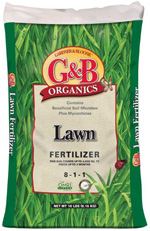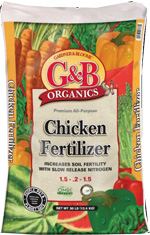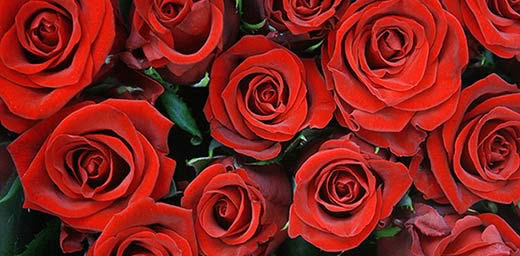|


Master Nursery Bumper Crop can be mixed with your native soil as a nutrient rich amendment to grow vegetables and flowers, or can be used as an organic mulch to help retain water. With added beneficial mycorrhizae, worm castings, bat guano and kelp meal - and no harmful synthetic chemicals  Black Forest Organic Soil Conditioner is a premium soil conditioner for roses, vegetables and lawns. Fortified with iron and nitrogen - but will not deplete soil of pre-existing nitrogen like untreated products. Loosens hard, compacted soils to improve drainage and increase moisture retention. Use as an amendment to improve soil or as a mulch to help keep the soil cool and moist.     
|
 |
FEATURED QUOTE: "Bread and butter, devoid of charm in the drawing room, is ambrosia eaten under a tree." |
 |
 |

Deciduous Fruit Trees are Here! |
 |
 |
|
One of the true pleasures home gardeners can experience is growing their own fruit. And with a little planning, it's possible to have an extended harvest season. Even gardens that are short on space can have an extended harvest if the proper planting techniques are used. The key to an extended or year-round harvest is understanding the ripening times of fruit trees. With deciduous fruit trees, you can start with early varieties of apricots that ripen as early as mid-May, followed by a crop of cherries in June. The summer months bring nectarines, peaches, plums and pluots in from mid-June through August. After that, apples, pears and persimmons ripen in September and October. Figs will bear fruit from early summer to late fall. If you are short on space, consider planting more than one variety in the same hole. Just make sure to plant trees with similar growing habits. Apples, cherries and pears tend to be the fastest and highest growers. Most deciduous fruit trees will produce a great-tasting crop of fruit as long as they receive at least 5-6 hours of sunlight during the growing season. The final secret to getting great tasting fruit is to wait until the fruit has ripened completely on the tree. This allows the sugar content to be at its highest level. The problem with most store-bought fruit is that it is harvested long before it is ripe so it will stand up to the rigors of shipping. The fruit never develops the same intense flavor on a shelf as it does on the tree. Now is a great time to plan your home fruit orchard. If you have any questions, our staff of fruit tree experts will be happy to help you plan your fruit tree garden! |

|
Choose some of the most dependable, easy-to-grow evergreens as the backbone of your indoor displays. Many of them are tough enough for the more difficult positions around the home, and some are bold enough to be focal point plants, too. The glossy evergreens such as dracaenas, fatsias, ficus, scheffleras, palms and philodendrons generally make excellent stand-alone plants, but they can also be used as the framework plants for groups and arrangements. They will be far more robust than plants with thin or papery leaves, feathery and frondy ferns, or even those with hairy leaves. You will need these other leaf textures, as well as flowering plants, to add variety of shape and form and a touch of color, but it makes sense to use the toughest evergreens as the basis of your houseplant displays. When a tough plant is needed for a cold or drafty spot, such as a hallway or near a back door, consider using some of the hardy foliage plants that have to cope with frost and gales when planted outdoors. Ivies are also good for these areas if you want a tough climber or trailer insteaad. There are lots of varieties to choose from, with a wide choice of leaf shape, size and color. |
 |
|
If you are a berry lover, you can't possibly have a garden without dedicating a space to grow delicious homegrown strawberries. Some people even go as far as saying they are the best of all the berries. What is unique about the strawberry (actually a member of the rose family) is that it is the only fruit with seeds on the outside rather than the inside. The delicate but great-tasting heart-shaped berry has always been associated with love, passion, purity, and healing. Legend has it that if you break a double strawberry in half and share it with a member of the opposite sex, you will fall in love with each other. And speaking of legends and folklore, locals in some parts of Bavaria still practice the annual rite--each spring--of tying small baskets of wild strawberries to the horns of their cattle as an offering to the elves. They believe that the elves, (who are known to be passionately fond of strawberries--what good taste they have), will help to produce healthy calves and an abundance of milk in return. Strawberries are also prized for their medicinal purposes and health attributes. Ounce for ounce, strawberries have more Vitamin C than citrus fruit and have been associated with lowering cholesterol, easing symptoms of gout and digestion problems and lowering the risk of certain types of cancer. Strawberries are generally divided into three groups: spring-bearing, everbearing, and day-neutral. The fruits of day-neutral plants and everbearers are usually smaller than the fruits of the spring-bearers. Spring-bearing strawberries generally produce a crop during a 2-4 week period in the spring. Ever-bearing strawberries produce three periods of flowers and fruit during the spring, summer, and fall--while day neutral strawberries will produce fruit throughout the growing season. Strawberries prefer the sun but do tolerate some shade. They can be used as an edging plant or a groundcover. Their major requirement is good drainage, so they'll benefit from being planted in mounded soil, terraced beds, barrels or other types of containers. They can be grown indoors, even, in a sunny window or with supplemental lighting, which makes them a great candidate for starting indoors in cold areas. We invite you to discover the sensational flavor of homegrown strawberries! Strawberry Planting and Care Instructions Placing plastic sheeting underneath the foliage will help keep the soil warm and weed-free. It also deters slugs, snails and other crawling insects from feeding on foliage and berries. Water bedding plants using drip irrigation or by flooding trenches between the mounds or terraces. Water plants in containers under the leaves. Keep them healthy during the fruiting season by feeding with a fertilizer that is low in nitrogen and will promote more bud growth and fruit. |
 |
|
As homes continue to be built larger and garden space becomes smaller, fewer homeowners have the space to plant as many fruit trees. But that doesn't mean you have to go without the fresh taste of homegrown fruit. All you have to do is incorporate the principles of Backyard Orchard Culture. The objective behind this gardening concept is to allow for a prolonged harvest of tree-ripe fruit from a small space. This can be accomplished by planting multi-grafted fruit trees, planting two or more trees with different ripening dates in the same hole, or by espaliering fruit trees along a sunny house wall or fence line. By using multi-graft trees or planting more trees in one hole, a homeowner can now extend a 3-4 week harvest season into 10-12 weeks of different flavors. Planting or creating espaliers along a fence line can also free up valuable garden space for more fruit trees or other ornamental plants. Close planting also offers the additional benefit of restricting a tree's vigor, because it has to compete for root space and sunlight with other nearby trees. More of the tree's energy will go towards producing fruit instead of sending out new growth. Close planting also can create an environment for better cross-pollination, which also leads to increased fruit production. Most types of fruit trees need to be pruned each year to stimulate new fruiting wood, remove dead and diseased branches, or to allow more sunlight between the branches to help fruit ripen better and more evenly. If you start pruning consistently when your trees are young, it will be much easier to keep the tree at a manageable or desirable height. At the heart of Backyard Orchard Culture is the concept of summer pruning. By pruning at the same time you are thinning your crops, you will be better able to distinguish the kind of wood on which the tree sets fruit. You won't accidentally prune off any fruit because you can see it, and the new growth is always above or beyond the fruit. Reducing the size of the tree canopy will in turn reduce the photosynthesis (food manufacture) of the tree. This helps to limit the amount of food materials and energy available for the roots to store, which in turn will control the tree's capability to produce as much new growth the rest of summer or the following spring. Pruning for size control in the summer will reduce your pruning chores in winter. Once the leaves fall off, you will have a better opportunity to prune for branch spacing and overall shaping of your trees. To create an espalier tree, simply prune off anything that doesn't grow flat. Then selectively thin and train what's left to space the fruiting wood. You can espalier most fruit trees, but apples and pears lend themselves to this type of pruning better than other varieties. Smaller fruit trees can be much more manageable to spray, prune, and harvest than large trees. So, take a new look at your garden and you might be surprised at the possibilities you have for growing fruit trees. Then close your eyes and think about how great the fruit from those trees will taste! |
 |
|
What's the best time to spray my peach and nectarine trees to prevent peach-leaf curl? Answer: Peaches and nectarines should actually be sprayed 3 times each winter to prevent peach-leaf curl. The first (and most important) time to spray is in fall when about half the leaves have fallen. We recommend a combination of a copper spray with a spreader sticker. The first spray should also include dormant spray oil to kill any insects hoping to over-winter. The key is to make this first application before winter storms and while there is still some foliage to absorb the spray. The second application should be made at full dormancy in mid-winter. The third and final application should be made during pink bud swell, but prior to opening of blooms. (We recommend staying upwind from the spray unless you are planning to audition for the Blue Man Group.) |

 |
Written content © Garden Partners LLC, or respective authors. All Rights Reserved. Privacy Policy. All written content contained in this site is protected by United States copyright law and may not be reproduced, distributed, transmitted, displayed, published, or broadcast without prior written permission of Garden Partners, LLC. You may not alter or remove any trademark, copyright or other notice from copies of the content. |



